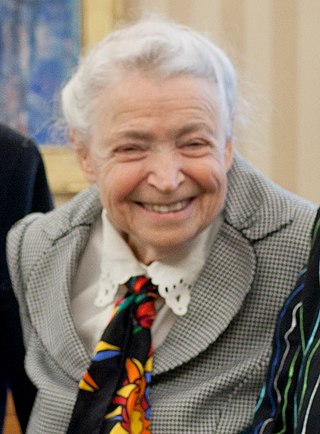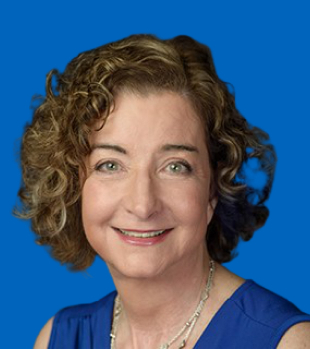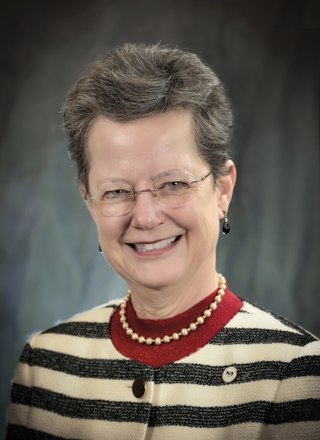Related Research Articles

The Levitated Dipole Experiment (LDX) was an experiment investigating the generation of fusion power using the concept of a levitated dipole. The device was the first of its kind to test the levitated dipole concept and was funded by the US Department of Energy. The machine was also part of a collaboration between the MIT Plasma Science and Fusion Center and Columbia University, where another (non-levitated) dipole experiment, the Collisionless Terrella Experiment (CTX), was located.

Mildred Dresselhaus, known as the "Queen of Carbon Science", was an American physicist, materials scientist, and nanotechnologist. She was an institute professor and professor of both physics and electrical engineering at the Massachusetts Institute of Technology. She also served as the president of the American Physical Society, the chair of the American Association for the Advancement of Science, as well as the director of science in the US Department of Energy under the Bill Clinton Government. Dresselhaus won numerous awards including the Presidential Medal of Freedom, the National Medal of Science, the Enrico Fermi Award, the Kavli Prize and the Vannevar Bush Award.

Myriam Paula Sarachik was a Belgian-born American experimental physicist who specialized in low-temperature solid state physics. From 1996, she was a distinguished professor of physics at the City College of New York. She is known for the first experimental confirmation of the Kondo effect in the 1960s.
Richard Freeman Post was an American physicist notable for his work in nuclear fusion, plasma physics, magnetic mirrors, magnetic levitation, magnetic bearing design and direct energy conversion.

Laura H. Greene is the Marie Krafft Professor of Physics at Florida State University and chief scientist at the National High Magnetic Field Laboratory. She was previously a professor of physics at the University of Illinois at Urbana-Champaign. In September 2021, she was appointed to the President's Council of Advisors on Science and Technology (PCAST).
Benjamin Lax was a solid-state and plasma physicist.
Sherry J. Yennello is an American nuclear chemist and an Elected Fellow of the American Association for the Advancement of Science. She is a Regents Professor and the holder of the Cyclotron Institute Bright Chair in Nuclear Science, who currently serves as the Director of the Cyclotron Institute at Texas A&M University. She is also a Fellow of the American Chemical Society and the American Physical Society. She has authored as well as co-authored more than 530 peer reviewed journal articles and has conducted many invited talks, presentations and seminars at several prestigious academic conferences and scholarly lectures.
Jelena Vučković is a Serbian-born American professor and a courtesy faculty member in the Department of Applied Physics at Stanford University. She served as Fortinet Founders Chair of the Department of Electrical Engineering at Stanford University from August 2021 through June 2023. Vučković leads the Nanoscale and Quantum Photonics (NQP) Lab, and is a faculty member of the Ginzton Lab, PULSE Institute, SIMES Institute, and Bio-X at Stanford. She was the inaugural director of the Q-FARM initiative. She is a Member of the National Academy of Sciences, and a Fellow of The Optical Society, the American Physical Society and the Institute of Electrical and Electronics Engineers.
Tamar Seideman is the Dow Chemical Company Professor of Chemistry and Professor of Physics at Northwestern University. She specialises in coherence spectroscopies and coherent control in isolated molecules and dissipative media as well as in ultrafast nanoplasmonics, current-driven phenomena in nanoelectronics and mathematical models.

Ying Shirley Meng is a Singaporean-American materials scientist and academic. She is a professor at the Pritzker School of Molecular Engineering at the University of Chicago and Argonne Collaborative Center for Energy Storage Science (ACCESS) chief scientist at Argonne National Laboratory. Meng is the author and co-author of more than 300 peer-reviewed journal articles, two book chapter and six patents. She serves on the executive committee for battery division at the Electrochemical Society and she is the Editor-in-Chief for MRS Energy & Sustainability.
Marlene Rosenberg is an American plasma physicist known for her work on cosmic and interplanetary dusty plasma.

Prineha Narang is an American physicist and computational material scientist. She is a Professor of Physical Sciences and Howard Reiss Chair at the University of California, Los Angeles (UCLA). Narang currently serves as a U.S. Science Envoy approved by the Secretary of State to identify opportunities for science and technology cooperation. Before moving to UCLA, she was first an Environmental Fellow at Harvard University Center for the Environment and then an Assistant Professor in the John A. Paulson School of Engineering and Applied Sciences at Harvard University. Narang’s work has been recognized internationally by many awards and a variety of special designations, including the Mildred Dresselhaus Prize, the 2021 IUPAP Young Scientist Prize in Computational Physics, a Friedrich Wilhelm Bessel Research Award from the Alexander von Humboldt Foundation, and a Max Planck Sabbatical Award from the Max Planck Society. Narang also received a National Science Foundation CAREER Award in 2020, was named a Moore Inventor Fellow by the Gordon and Betty Moore Foundation for the development for a fundamentally new strategy for single molecule sensing and environmental toxin metrology using picoscale quantum sensors, CIFAR Azrieli Global Scholar by the Canadian Institute for Advanced Research, and a Top Innovator by MIT Tech Review. Narang was awarded a Guggenheim Fellowship in 2023.

Julia Mae Phillips is an American physicist. She began her career in materials research on thin films on semiconductors and has transitioned into leadership roles in science policy. She currently serves on the National Science Board.
Sara A. Majetich is an American physicist and Professor of Physics at Carnegie Mellon University. Her work considers magnetic nanoparticles and nanostructures for application in spintronic devices. She is a Fellow of the American Physical Society and the Institute of Electrical and Electronics Engineers.
Rachel Goldman is an American scientist. She is professor of materials science and engineering, electrical engineering and computer science, and physics at the University of Michigan where she has been a faculty member since 1997. She also serves as the associate director of applied physics at the University of Michigan since 2010.
Laurie Elizabeth McNeil is an American condensed matter physicist and materials scientist whose research topics have included optical spectroscopy, the properties of crystals and semiconductors, and the synthesis of carbon nanotubes. She is Bernard Gray Distinguished Professor of Physics and Astronomy at the University of North Carolina at Chapel Hill.
Geralyn P. (Sam) Zeller is an American neutrino physicist at Fermilab. At Fermilab, she is a participant in the MiniBooNE experiment, co-spokesperson for the MicroBooNE experiment, and deputy head of the Neutrino Division.
Valerie Margaret Thomas is an American physicist and environmental engineer, with broad research interests in environmental technology including aspects of the subject relating to materials science, energy systems, transportation and transportation energy use, and economics. She is the Anderson Interface Professor of Natural Systems at Georgia Tech, appointed jointly to the schools of industrial and systems engineering and public policy.
Gene Frederick Dresselhaus was an American condensed matter physicist. He is known as a pioneer of spintronics and for his 1955 discovery of the eponymous Dresselhaus effect.
Maria Cristina Volpe is an astrophysicist specializing in the theory and phenomenology of cosmological neutrinos, including neutrinos from supernovae, the mass of neutrinos, and neutrino oscillation. She has also been involved in research on ground-based facilities for neutrino production via beta decay, producing so-called "beta beams". She is a director of research for the French National Centre for Scientific Research.
References
- 1 2 3 4 McCluskey, Eileen (May–June 2006), "Aviva Brecher '68, SM '68: Transportation Expert Studies Magnetic Levitation Solutions", News & Views, Infinite Connection, MIT Alumni Association
- 1 2 3 4 5 6 7 8 9 10 Kline, Madeleine (9 September 2017), "Aviva Brecher", Margaret MacVicar Memorial AMITA (Association of MIT Alumnae) Oral History Project, Massachusetts Institute of Technology, hdl:1721.3/186178
- 1 2 Sigma Xi Distinguished Lecturers, 2002-2003, Sigma Xi, retrieved 2021-09-09
- ↑ "Fellows nominated in 1999 by the Forum on Physics and Society", APS Fellows archive, American Physical Society, retrieved 2021-09-09
- ↑ Schmadel, Lutz D. (2015), "(4242) Brecher", Dictionary of Minor Planet Names, Springer International Publishing, p. 47, doi:10.1007/978-3-319-17677-2, ISBN 978-3-319-17676-5